Presentation
3 month history of wheeze and obstructive airway symptoms when lying flat.
Patient Data

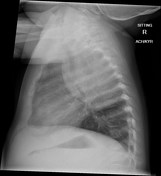
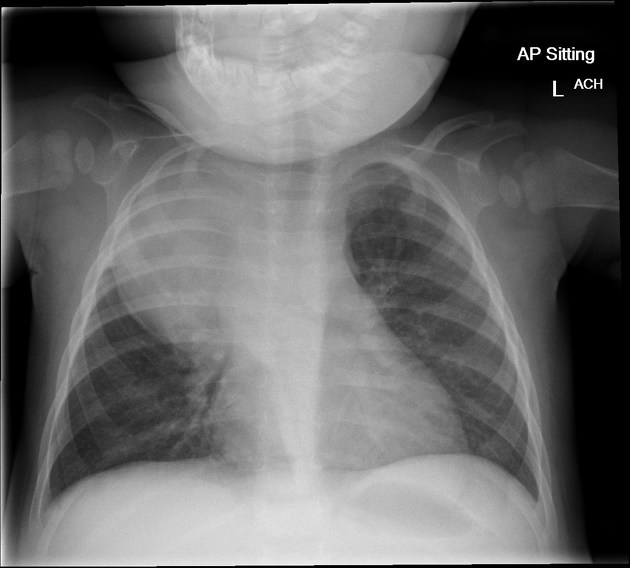
Large right posterior mediastinal mass with a well defined inferior margin. The mass is predominantly soft tissue density with calcific foci inferiorly. Mass effect is exerted on the trachea and right main bronchus. Subtle widening of the posterior intercostal spaces and neural exit foramina. The lungs are clear.
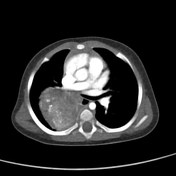

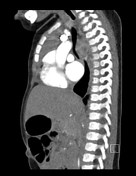

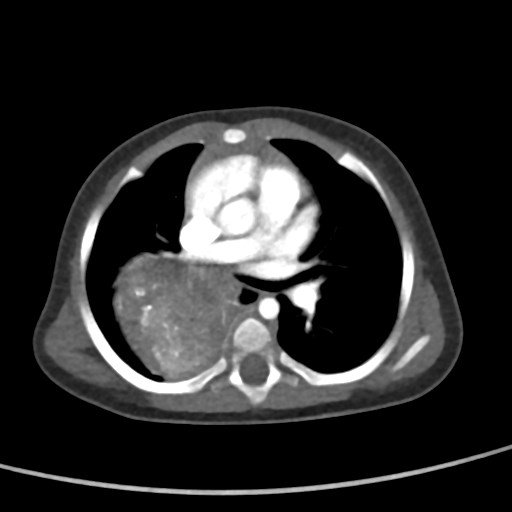
CT confirms the chest x-ray findings of a right posterior mediastinal mass with soft tissue density and internal calcifications. The mild widening of the neural exit foramina and posterior intercostal spaces is better demonstrated. No intraspinal extension.
Atelectasis at the right lung base secondary to general anesthesia. The upper abdominal organs are normal.
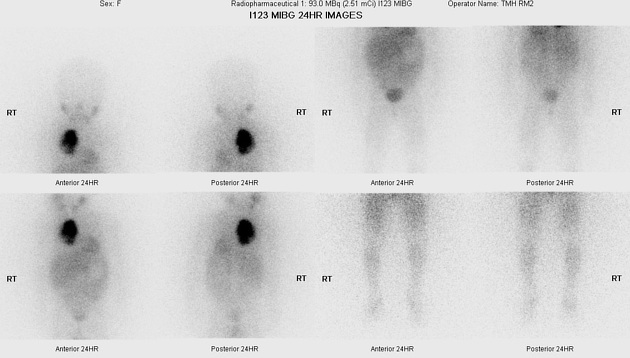
MIBG shows intense tracer uptake in the posterior mediastinal mass with no evidence of MIBG-avid disease elsewhere.
Thoracoscopic tumor resection was performed following 4 cycles of chemotherapy.
HISTOLOGY
MACROSCOPIC DESCRIPTION: Well demarcated grey-brown variegated and septated tumor with diffuse mottling with yellow white calcification.
MICROSCOPIC DESCRIPTION: Right thoracic neuroblastoma. An intermixed ganglioneuroblastoma is present. Schwannian stroma containing sheets of aggregated ganglion cells, with numerous nests and areas of immature neuroblasts within islands of neuropil. Widespead calcification is present. Areas of necrosis involving approximately 10 to 15% of the total tumor volume.
SUMMARY: Right thoracic neuroblastoma: Post treatment intermixed ganglioneuroblastoma.
Case Discussion
This case shows typical imaging features of a thoracic neuroblastoma. The presence of calcifications (seen in 80-90% of neuroblastoma cases), and remodeling of the ribs and neural exit foramina suggest the neurogenic origin, arising from the sympathetic chain.




 Unable to process the form. Check for errors and try again.
Unable to process the form. Check for errors and try again.